What’s Happening Here?
I can’t think of a better way for starting the newsletter than with a diagnostic challenge. This one is timely (yes, that’s a hint). Nearly every spring I run across this problem at nurseries and in landscapes across the country. Take a look at this hosta:
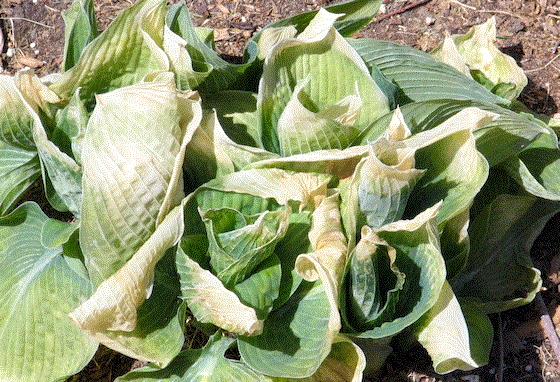
This problem has a few appearances that are influenced by several factors, including the cultivar affected and time. Let’s see ... what other hints I can provide that won’t totally give away the answer ...? Here’s one: This problem is not exclusive to hostas; many perennials can experience this issue.
Looking at the image above, I can think of a couple potential options. It’s time for me to ask, "What’s happening here?" Enjoy the newsletter while you contemplate the possibilities and I’ll reveal the answer before signing off. Good luck!
Perennials for 2022
Each year, Walters Gardens introduces lots of new perennials and this year is no exception. Actually, the introductions they announce this year are new to the trade in 2021 and will be available at retail in 2022. Here’s a glimpse at a few of their new introductions that caught my eye:
Leucanthemum AMAZING DAISIES Banana Cream II
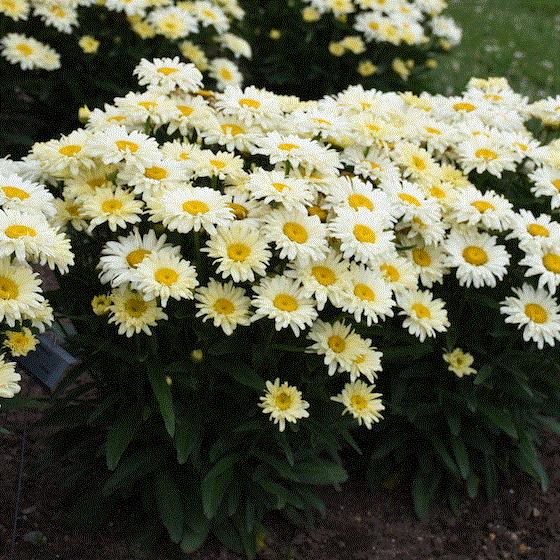
With movies, the sequels often aren’t as good as the original, however, with plants, the second versions are almost always better than their predecessors. If you’re a fan of Banana Cream and enjoy it year after year, you’ll love Banana Cream II. Like the original, the flowers are lemon yellow and brighten to creamy white over time. Its many improvements include a more appealing habit, flowers earlier in the season, is more floriferous and holds the yellow coloration longer than the original version. Hardy to Zone 5.
Monarda Leading Lady Razzberry
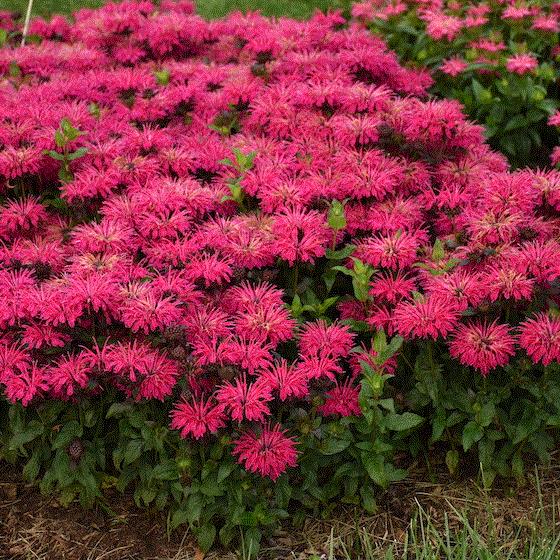
As a leading lady, Razzberry and her supporting cast of Monarda Leading Lady cultivars set the stage ablaze with color earlier in the season than all other bee balms on the market. All eyes will be on Razzberry as the curtain opens and the bright raspberry-purple flowers take center stage. You’ll definitely enjoy the show this compact Zone-4 perennial puts on.
Spigelia marilandica Ragin' Cajun
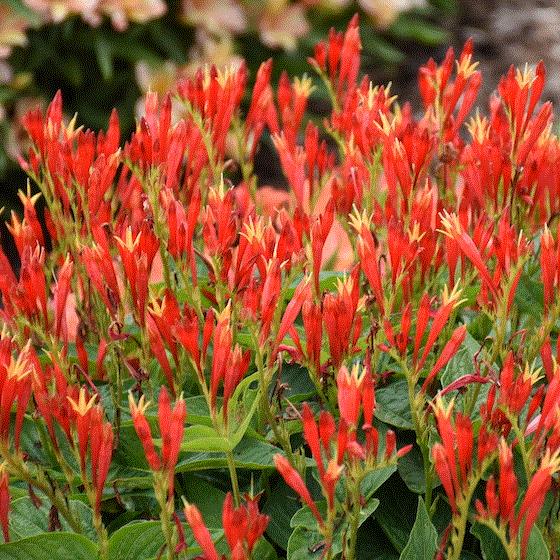
The next new Walters Gardens cast member to debut in 2022 is Spigelia Ragin' Cajun. This native woodland perennial (grows well in both sun and shade) is great for attracting hummingbirds and other pollinators into the landscape. Ragin' Cajun has orange-red flowers, a nice rounded habit and is very floriferous. This new Zone-5 perennial puts on a good show and spices up the landscape.
Hosta Drop Dead Gorgeous
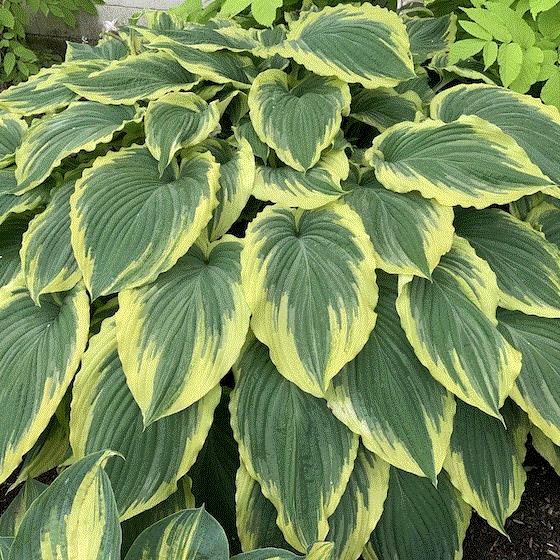
By now I reckon you can tell I’m having some fun with these descriptions. Please allow me to finish with one more. I’m not sure if its name was derived from the 1999 cult classic, the 2006 British comedy drama TV series, the Aerosmith song of the same name or simply to describe its landscape appearance.
Regardless, Hosta Drop Dead Gorgeous is a showy shade specimen that’s worthy of this name. After all, Drop Dead Gorgeous has large beautiful ovate leaves with green centers and brightly contrasting yellow margins. At maturity, it reaches an impressive 30-in. tall and 86-in. across. Be sure to add this gorgeous Zone-3 cultivar to your hosta program.
This is just a sampling of the great new 2022 introductions Walters Gardens is introducing. Click HERE to check out more great upcoming introductions.

Inside Grower's "Biobest Pest Tips"
In this week's Inside Grower, editor-at-large Jennifer Polanz included an article covering two biocontrols from Biobest that are effective at controlling thrips. Rather than giving you a recap, here's the article straight from this week's Inside Grower:
Biobest recently released two items on biocontrols—one against thrips on strawberry crops and another against aphids on peppers.
For thrips control, Advisor Arno Hellemons recommends a combination of Amblyseius cucumeris and Orius laevigatus, with cucumeris controlling larvae and Orius controlling later stages.
"Most growers already use Amblyseius-System and/or ABS-System," explains Arno. "This provides an excellent start, as the cucumeris eats thrips larvae, efficiently tackling the first stage. Introducing this predatory mite into the crop regularly and preventatively provides an effective first line of defence.
"However it doesn’t control adult thrips. Orius-System is a valuable addition to the control strategy, as it eats all stages of thrips, while also tackling aphids, spider mites and whitefly."
Read more about temperature and timing for these biocontrols HERE.
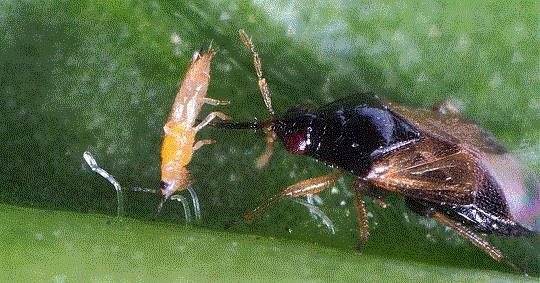
On the pepper side, Advisor Bart Elseviers has been working with a number of pepper growers who are adding Hoverfly Eupeodes-System to reduce aphid populations, even at lower temperatures.
According to the company: "A highly effective predator, the Eupeodes larvae feed on all common aphid species found in horticultural crops. As a generalist, this overfly can also contribute to the control of mealybugs, whiteflies, thrips and spider mites."
CLICK HERE for more details.If you're not already familiar with Inside Grower, it's a great FREE e-newsletter that covers controlled environment vegetable production. Click HERE to subsrcibe to Inside Grower. Thank you, Jen, for putting together a great newsletter with content I could share with my readers.

Knowing and Growing Boxwood
If you grow or are interested in growing boxwood, you won't want to miss AmericanHort's next FREE tHRIve Series webinar titled, "Knowing and Growing Boxwood." Join industry veteran and former curator of the National Boxwood Collection at the U.S. National Arboretum in Washington D.C. Lynn Batdorf at 1:00 p.m. Eastern on Wednesday, June 2, 2021 as he presents many fascinating details on boxwoods.
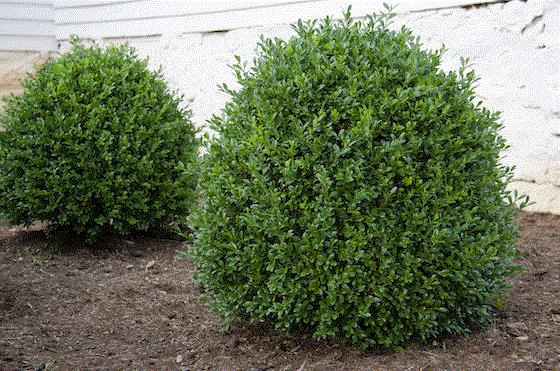
Boxwood NewGen Independence
Lynn will cover the history of boxwood, it's nomenclature, landscape uses, legend and lore, how to grow them, and managing pests and diseases that may arise. Boxwood has been grown for centuries, but isn't always well understood. Attend the FREE webinar and get caught up to speed on everything this great shrub has to offer (and then some).
Click HERE to register for the boxwood webinar.
The Answer is …
At the top of the newsletter, I shared this image of a hosta and asked if you could determine what's causing these symptoms:

I’m always curious about the possibilities you’ve pondered. In this case, did you come up with damage from frost, leaf scorch, drought injury or something else? I mentioned previously that this issue can appear differently. Here are a couple more examples to help you finalize your answer:
I believe these last two images were very helpful and I’m thinking they helped you with determining the cause of these symptoms. If your final answer is frost damage, you’ve successfully completed this week’s diagnostic challenge.
I Need to Cover This
Please don’t worry—I don’t have a major announcement to make. I chose the title above to avoid giving away the answer to the diagnostic challenge. Covering hostas during anticipated frost events is the best method of protecting them from cold and preventing frost damage from occurring.
Hostas begin to emerge as the temperatures warm up in the spring, however, they usually emerge before the chances of severe frosts have passed. This leaves them vulnerable to frost damage from below-freezing temperatures. The new growth emerges as pins or "bullets" that contain tightly folded leaves inside. If these pins are exposed to below-freezing temperatures, cold damage can occur. During this stage, the frost damage usually occurs on the outermost leaves and the tips of the leaves near the top of the pins. Once a leaf has fully expanded, the entire leaf is susceptible to sub-freezing temperatures.

During most cold events, frost injury can be prevented by covering them with burlap, fabric or plastic prior to the unset of freezing temperatures. Whether they're protected from cold or not, if frost injury occurs, it usually doesn’t kill the plants. The damaged tissue can be cut off; this is particularly helpful if the frost injury occurred before the leaves were fully expanded, as injury to the pins or bullets can cause the new leaves to expand abnormally.




Thanks for reading this edition of Perennial Pulse. My email is ppilon@ballpublishing.com if you have any comments or suggestions.
Take care,
Paul Pilon
Editor-at-Large—Perennial Pulse
Technical Manager—OHP, Inc.
This email was received by you and 31,038 other fine subscribers!
If you're interested in advertising in Perennial Pulse, contact Kim Brown ASAP and she'll hook you up.